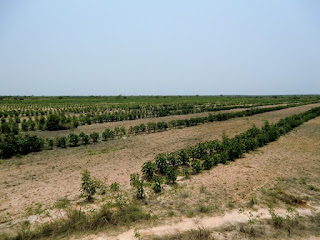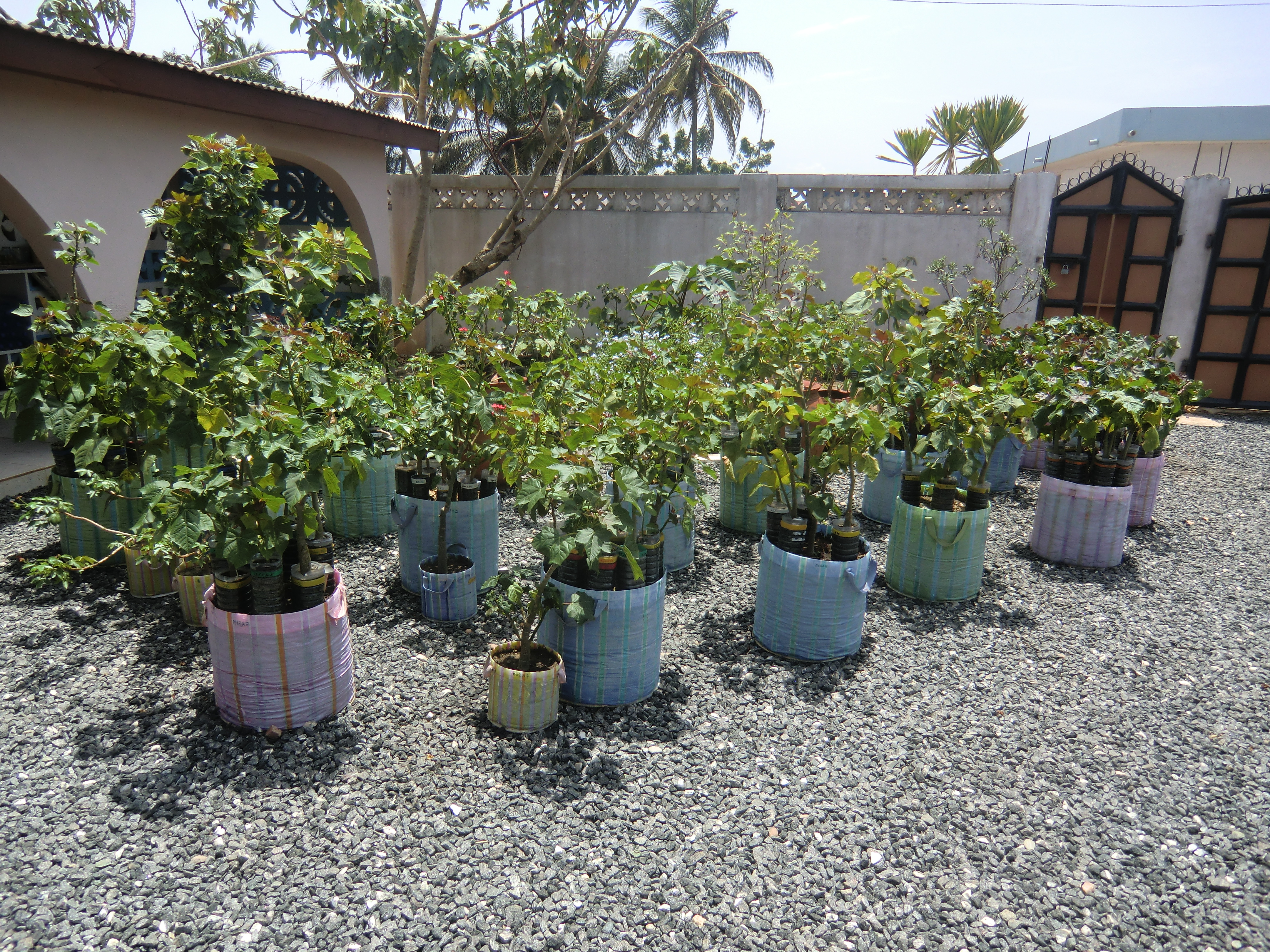Part 1 – The future is non-toxic ›
I meet all these people lately asking me, hey, “what are you doing down there in Africa…” and I say: “Jatropha farming my friend” trying to be as brief as possible. 95% of the time I either get a blank look or a “Huu Jat… eh… what did you say? Never heard of it.”
This is hard to believe for somebody who has spent every day of his live since 2008 with the ups and downs of this business but its the plain truth, most people don’t have the slightest idea what I am talking about… So usually quite hesitantly I start going on: “You know, its this new crop people talk about a lot recently for producing non-edible oil to be used in airplanes replacing some of today’s fossil jet fuels and get the airlines’ carbon balance right”. Ahh, they say, “like palm oil isn’t it? But isn’t that bad for the environment?”
Listening to this again and again and reading all those vastly unfounded reports from NGO’s bashing a very promising future energy and animal feed crop that has not even fully emerged the “breeder’s drawing board” yet has finally convinced me to start writing this small series of articles. It should help those interested and with an open mind to understand better what the whole thing is about.
I myself am the MD of Bionic Palm in Ghana and a Jatropha farmer, but even more an active breeder of future high yielding Jatropha and a developer of all kinds of “agronomic” techniques aiming to make this plant a profitable and highly sustainable source of energy and protein. We work with partners from around the world who share our motivation.
There is an obvious high disappointment by many with Jatropha by many investors and downstream oil users, however, this is a notion commonly not shared by long standing experienced researchers of the plant. Now, why is that so?
Jatropha (to be correct “Jatropha curcas Linn” or for us from here on simply JcL) is a native of Central America and a member of a large genus of approx. 172 different species. It offers a lot of interesting features as a biological system that have never been fully explored. JcL was brought to Africa and Asia many hundred years ago by the Portuguese. Until recently its use was mainly limited to serving as hedges separating cattle from fields and controlling mosquitoes with a small side use for soap and candle making. Therefore, there was never any serious domestication of the plant and for many decades it was basically left to itself until it was rediscovered in Africa and India as a possible feedstock source for biodiesel. The big hype that followed with investors was never founded on well thought through agronomic and business plans and definitely not based on a sound scientific understanding of JcL specifically or its taxonomic genus in general. Only a small number of reports had been published on the plant and only a handful of scientists had ever studied it. (A situation that significantly changed over the last 5 years.)
Still the investors of the early years concentrated on the acquisition of hundreds of thousands of hectars and started planting rapidly without ever truly analyzing the material they were working with. The back lash came quickly: The near wild plants they chose to plant with enormous financial efforts did not perform anywhere near as expected in their presentations. They all left out a very simple rule of agricultural projects: testing, testing, testing… When they started realizing their mistakes it was already too late. The investors’ money was gone and projects failing everywhere as they were never planned right in the first place. And then the global financial crisis hit, so no fresh money was available anywhere. Today we find large numbers of suspended or even completely abandoned projects from those days especially all over Africa.
It didn’t take long and legions of would be experts started blaming and criticizing JcL as the wrong approach for an endless number of reasons. However, since the people writing all the negative reports are not remotely the same kind of experts on JcL as they are on negative report writing, very few sound, business oriented assessments surfaced over the last few years. We have recently reported about one here.
But mostly unrecognized in public, in the background there was some profound practical and scientific work starting. While industry, finance and politics started abandoning JcL everywhere many researchers and agronomists picked up the subject and started for the first time some serious work on tha5t crop.
This author made some simple statements in a presentation given at a conference in 2008 in Accra:
(Here you can find a later, refined version of this very presentation)
“The Jatropha value chain is financially not working out for the early producers”.
But, the statement continues: “the outlook is positive once the following conditions are met:
1 – high yielding domesticated cultivars become available
2 – improved agronomic methods increase yields
3 – JcL specific mechanization technology becomes available”
Today I would add a statement about non-toxic cultivars or (less preferable) successful detoxification of the press cake in order to be able to use it as animal feed.
It was all clear in 2008 (while most still presented their old business models and some even do it until today), what is stated in more an more scientific reports: we need better planting material to begin with! However, improving planting material by large margins has been done again and again, so why not with JcL? Its quite impressive to study the history of the development of some common crops like maize with yield improvements of several hundred percent over the last 50-100 years.
In spite of the permanent flow of critical reporting, new strategies have been put in place around the world to change the JcL picture regarding all of the above mentioned points.
For example a company called SG Biofuels from San Diego, California has launched its Jatropha 2.0 platform with a lot of marketing hype (prematurely as I think) while we at Bionic Palm started our Bionic JcL3.0 initiative focused on Africa but actually reaching out much further than SGB. What all these activities have in common is a more profound approach to overcome the barriers that stopped the early JcL growers.
So what is out there to be expected?
My prediction is for a thriving JcL industry starting to pick up around 2015 with some early adopters of a generation 3 approach. Improved cultivars start coming up and will do so in growing numbers over the next couple of years. We plan to have a first high yielding non-toxic cultivar available for extensive testing by the end of 2013 after finalizing a proof of concept by mid 2012.
The markets, especially for green jet fuel (SPK) sector, will push hard for more supply, as their demand will be rising seriously from 2012 when Europe introduces its new emission policy for all commercial airlines flying in and out of Europe. Therefore the interested industry is already returning to JcL working on all kinds of feasibility reports and finance will start following them as long term off-take agreements become common.
Unfortunately we are currently going through a phase which I call the Jatropha generation 2, where strange people are pushing around clouds, sign long term deals for non existent Jatropha oil and “buy and sell” on the web a commodity that mostly doesn’t exist. This is the aftermath of the generation 1 gold rush and will vanish as soon as serious generation 3 projects emerge, based on strategies incorporating sound planting materials and agronomy concepts.
This article is followed by 4 more attempting to give more insight about what is to be expected from JcL:
Jatropha for Dummies – Part 1 – The future is non-toxic
Jatropha for Dummies – Part 2 – The Farming
Jatropha for Dummies – Part 3 – Equipment and Processing
Jatropha for Dummies – Part 4 – JcL Break Through – But When?



